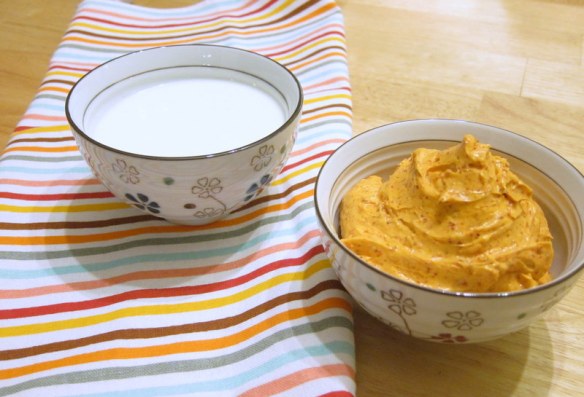[Disclaimer: this is not the lemon loaf cake from this week’s TWD.
Orange Cardamom Cheese Pound Cake.]
This week’s TWD recipe is an easy-peasy lemon loaf cake. Initial reviews on the TWD blog site seemed mixed; most people found it dry and/or lacking in lemon flavor. Since I had just baked a pound cake not too long ago (pictured above), I didn’t feel particularly excited about this one either at first. But the technique used here is a bit different from other pound cakes and while my first pound cake was fairly good, it was also quite dense and erred on the drier side. So I was eager to learn a different technique as I wanted to achieve a lighter texture while keeping the cake tight as pound cakes should be.
Most pound cake recipes will have you cream the butter with sugar first, before adding in the eggs and finally the dry ingredients. The shape and size of your sugar crystals may actually matter in getting that lighter texture. You see, our leavening agent, i.e. baking powder, releases carbon dioxide as it comes into contact with liquids. This carbon dioxide needs a place to go and that’s where the air pockets that your sugar has made in the butter creaming process come in. When your batter heats up, bubbles form, the moisture from the cake creates steam and the air pockets get filled leading to the seemingly magical rise of your cake. So you need sugar that will cut through the butter properly and create appropriate air pockets. This also means that you need to make sure you start with soft butter and that you cream the butter thoroughly. Adding more baking powder won’t necessarily do you good; overleavening can make the bubbles run to the top and pop, and you still won’t get that wonderful rise.


